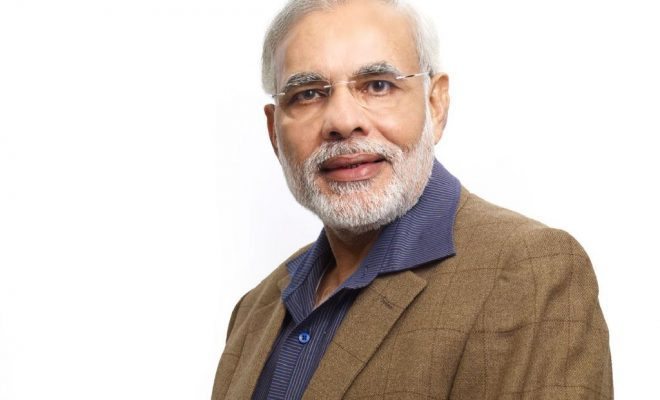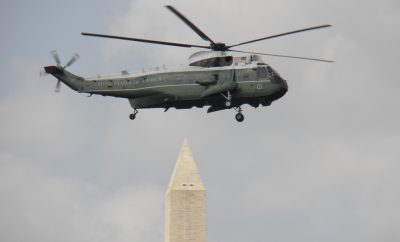 Image courtesy of [Global Panorama via Flickr]
Image courtesy of [Global Panorama via Flickr]
World
India: A Superpower on the Rise?
India has long been an important nation on the international stage; its massive population and rapidly growing economy have the potential to propel it forward even further. While there have been ebbs and flows–the recent recession strongly impacted the sub-continent–things may be looking up. There’s a new Prime Minister and India is on the rise yet again. Read on to learn about India’s growth, the relationships it has with other nations, and the challenges that the country will face in coming years.
A Look Into the Past
Like China and Mesopotamia, India is often considered one of the birthplaces of civilization. The first civilization in India was founded over five thousand years ago. Since then, India saw the rise and fall of countless empires, invading forces, and ideas. Buddhism and Hinduism were also founded in India; and Islam, when it reached the area in the eighth century, came to exert a powerful influence, as well.
The story of modern India however, picks up at the beginning of the eighteenth century, when the declining Mughal Empire was conquered piecemeal by the British East India Company. The British outcompeted their French rivals and bit by bit took over the sub-continent. Yet British rule was not to last either, with a large-scale mutiny in the middle of the nineteenth century hinting at the rise of Indian nationalism.
This came to fruition after years of protest that featured leaders such as Mahatma Gandhi when India finally achieved independence in 1947. This independence, however, did not come about smoothly. The same year India became independent, it also broke into two separate nations, Hindu India and Muslim Pakistan. As many as 12.5 million people migrated to one country or the other depending on their religion. Up to one million people died in the ensuing chaos.
Rise of Modern India
After the end of colonial rule, India initially adopted a planned economic approach. The idea was to increase consumer savings, which would then lead to greater investment in the economy and growth. The plan was to create a prosperous India that was financed by its own economy and not beholden to outside forces.
While the plan had some success, however, growth remained limited in India at an average of four percent annually in the 1950s, 60s, and 70s. The plan was also plagued by unbridled population growth and inequality. The proverbial corner was turned beginning in the late 80s and early 90s when the economy was finally opened up. Growth shot up to over 6.5 percent annually, while the service sector in particular began to take off.
Move to a Market Economy
The key to the turn-around for India economically was when it moved from a series of five-year plans, as part of a planned economy adopted from its then-ally, the Soviet Union, to a market economy, which is similar to those of Western nations. Originally India adopted a socialist model as the means to improve its economy. This meant most industry, licensing, and investment infrastructure was controlled by the government. The whole idea behind this logic was to build strong home-grown industries in India, and in the process prevent the inequality notorious in capitalist societies from spreading there.
The planned economy proved ineffective. This was mainly due to low growth rates and the failure to generate high savings rates. In fact the state, far from succeeding in building up savings, actually began running up higher and higher deficits as its programs proved ineffective. Thus, spurred by this ineffectiveness and a rise of the price of oil as a result of the first gulf war which nearly caused the country to default, India made a change. The government did a complete 180, reducing state control and planning, liberalizing trade and investment, and reducing the deficit.
Following the success from the 1990s and with continued reforms, the Indian economy continued to hum along in the first decade of the 2000s, averaging greater than six percent growth annually. Rapid growth stalled, however, as it did in much of the rest of the world, following the Great Recession.
The reason that India was hit so hard was because of a failure to further liberalize policy concerning labor, energy, land reform, and infrastructure improvement. Namely the issue was in many ways the same that had been affecting India during its planned economy, despite the reforms the country had enacted in the past two decades. First labor laws were still very restrictive so it made it hard for people to move around in search of jobs. Secondly, the infrastructure was not adequately developed in India so that its manufacturers could easily export their products. Third, the country was still plagued by shortages in essential goods, such as energy. This was all compounded by the government’s vain effort to prop up the country’s currency, the Rupee. Not only has this led to a higher deficit, but also inflation, which eats away at people’s savings and makes them poorer. This led to growth rates closer to four or five percent during the recession.
After the Recession
Nevertheless, India’s economy has rebounded in the last two years and in 2014 outpaced China for the first time. This was due to several improvements. First, both the manufacturing and financial sectors improved dramatically. In addition, new Prime Minister Modi and other political leaders have worked diligently to reduce debt. Lastly, the drop in the price of oil has dramatically helped India, as most of its import deficits were due to the importation of oil to fuel its growing need.
While India has seemingly regained its status as a rapidly growing emerging market, this also comes with caveats. First, the growth figures that show it outpacing China had to be recalculated due to some errors, so many economists are treating them with skepticism. Secondly, according to a New York Times study from 2011-2012, 30 percent of Indians still live in extreme poverty, which translates approximately to 363 million people. That is more people than live in the United States. Thus, although India may recoup its status as a major, up-and-coming economy, there is still room for improvement. The following video gives an outlook on the impact reforms could have on India’s economy.
India’s Friends and Enemies
Pakistan
When discussing international concerns for India, the discussion always starts with Pakistan. The two nations were founded at the same time when British rule in India ended; however, the division of the two countries was plagued by extreme violence and a persistently strong feeling of animosity. The situation has in no way improved by the three wars and ongoing proxy war being waged over Kashmir. The conflict in Kashmir stems back to the separation of India and Pakistan.
At the time of independence, there were 562 princely kingdoms that were independent from either country and could choose which one they wanted to join. Both countries therefore were eager to recruit these principalities–Kashmir was one of the most coveted. Pakistan seemed to have the upper hand, as 70 percent of the population was Muslim; however, at the time, the ruler was Hindu so India claimed the area on that argument and still occupies it to this day. Aside from the direct conflicts there, Pakistan has also waged a guerrilla campaign to free the territory from India and incorporate it into the Muslim state of Pakistan.
On top of all that, both countries possess nuclear weapons and flaunt their capabilities, an example of which was the corresponding nuclear tests during the 90s. The video below provides a summary of the two nations’ conflict.
Nonetheless, hopes for thawed relations came when Prime Minister Modi was elected last year–one of his campaign promises was to improve relations between the two countries; however, lately Modi’s speeches have been full of aggressive rhetoric and the Pakistani military continues to support anti-India terror groups so change has yet to come. An example of this is when he suggested Pakistan was, “waging a proxy war” in Kashmir. He has also canceled several meetings with Pakistani officials, including one potential rendezvous at the United Nations.
China
India’s other major neighbor in Asia is China. Like Pakistan, India also fought a brief war with China in 1962 and has since maintained a relatively tense border with the country in the Himalayas. Tthe relationship with China has steadily improved in other areas as the countries have signed a number of trade agreements. The relationship was tested in 2013 with a Chinese incursion into Indian territory; however, no apparent serious harm came of it.
The lack of consternation may be rooted in how the countries view each other. In India, China is seen as a chief rival and also a source of emulation economically. For China, which is stronger militarily and economically, India is not regarded as much of a rival.
United States
Like its relationship with both Pakistan and China, India’s relationship with the U.S. is complicated. The countries originally shared strong ties, with the U.S. aiding India during the conflict with China. Relations were strained following America’s decision to side with Pakistan in its 1971 war with India. Things were further exacerbated by an arms treaty signed between India and the USSR and India’s testing of nuclear weapons in the 70s.
Relations seemed to be improving in the 1990s as India opened up its economy and moved to a free market approach. But once again ties between the nations weakened in 1998 when India again tested nuclear weapons, which drew condemnation and sanctions from the U.S. The sanctions were quickly repealed though and the two nations became close once more over a commitment to combat terrorism. The two sides have continued to grow closer since then, signing everything from trade to weapons agreements. In 2013 an Indian delegate was arrested for committing visa fraud, causing major waves. The two sides have seemed to yet again overcome this hiccup though, following the president’s recent trip to India where he reaffirmed the U.S. commitment to friendship.
The relationship with the U.S. also seems likely to continue to improve, despite numerous setbacks, many of which were over nuclear policy that now seem settled. While the U.S. may want to utilize India against a rising China, the two sides also value each other as trade partners. The relationship is further enhanced by the U.S.’s further distancing itself from Pakistan.
Domestic Concerns for India
While India navigates the dangerous game of international politics, it has internal issues to consider, as well. First and foremost is the status of women. While seemingly no country in the world can boast of total equality between men and woman, the situation is especially bad in India. While some women may enjoy access to lucrative lifestyles, there is a virtually systemic oppression of women in education, marriage, and the economy. A grisly example was the gang-rape of a woman by six men in Delhi in 2013 that resulted in the woman’s death. While four of the men were eventually sentenced to death, their crime highlighted a culture where women are often blamed for rape and where the courts are slow to act.
Women, of course, are not the only group to be institutionally marginalized in India. The caste system has existed for a long time. In this system people are born into and can expect to rise no further than a particular caste or class, which is often associated with some type of profession. While some efforts have succeeded at down-playing caste origins in jobs, castes still play a large role in social interactions and romantic relationships.
The persistence of discrimination, both against women and people of lower classes, speaks to the issue of inequality in the country. According to a report from the United Nations – Economic and Social Commission for Asia and Pacific (UNESCAP), income inequality actually increased in India from the 1990s to late 2000s.
India’s population is the second largest in the world at more than 1.2 billion people. With birth rates still outpacing death rates, that number is only going to continue to increase until it is expected to plateau in 2050. The population of India is also expected to surpass that of China for the world’s largest along the way, in 2025. All these extra people mean more food, housing, and jobs for a country that is already hard pressed to generate them at current levels. The accompanying video highlights the issues with poverty in India.
Domestically, though changes have been made incrementally, the sweeping changes necessary to fix many of India’s societal ills seem unlikely. As the infamous Delhi rape trial showed, while courts can be forced into action when thrust into the spotlight, they have been very slow to protect women. This also speaks to a problem of institutionalized marginalization for a large chunk of society, which has lasted for many years and thus is unlikely to simply go away now. Couple these issues with continued population explosion and the poverty that haunts India is likely to continue. Particularly with inequality rising and wealth being consolidated into the hands of the elites, much as it is in western nations.
Conclusion
After initially struggling following independence, India has enjoyed strong recent growth. While that growth was threatened by the great recession, India was able to pull through and even outpace China, if the numbers are to be believed. Going forward, Asia’s other potential superpower has many issues to deal with. Internationally, serious issues still exist concerning the relationship between India and Pakistan. India’s relationship with Asia’s affirmed rising super power is also in question as India moves closer to fellow democracy in the United States, while China seemingly drifts closer to fellow autocrat Russia.
Domestically it is more of the same, with concern over the economy dominating. Yet other issues also exist, namely an entrenched class system and the low status of women. Thus, while India has come very far, there is still a long way to go. Therefore while it is still possible for India to act on its superpower potential and one day rival China as Asia’s premier power, reforms and improvements are likely required along the way.
Resources
Primary
Indian Embassy: U.S.-India Relations
Additional
Forbes: India Growth Now Beats China
Diplomat: India and Pakistan: A Debilitating Relationship
National Interest: China and India: The End of Cold Peace?
Council on Foreign Relations: Timeline U.S.-India Relations
Centre for Economic Policy Research: India’s Growth in the 2000s: Four Facts
Economist: How India Got Its Funk
BBC News: India Growth Figures Baffle Economists
The New York Times: Setting a High Bar for Poverty in India
Asia Society: India-Pakistan Relations: A 50-Year History
Saarthak: Women’s Situation in India
World Post: India Gang Rape Case: Four Men Sentenced to Death
Economist: Why Caste Still Matters in India
Financial Express: Income Inequality: Poor-Rich Gap Growing in India, Asia-Pacific








Comments